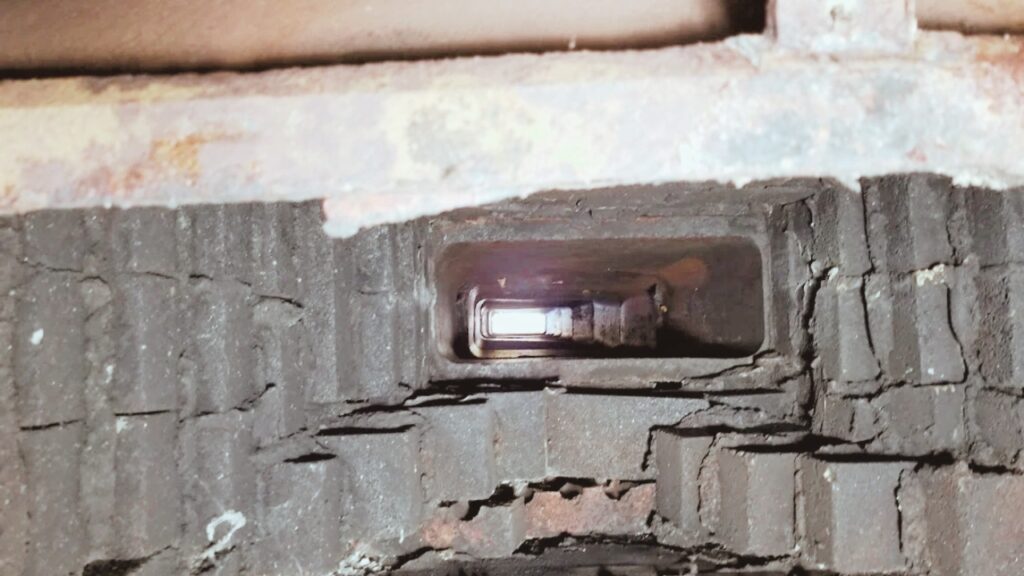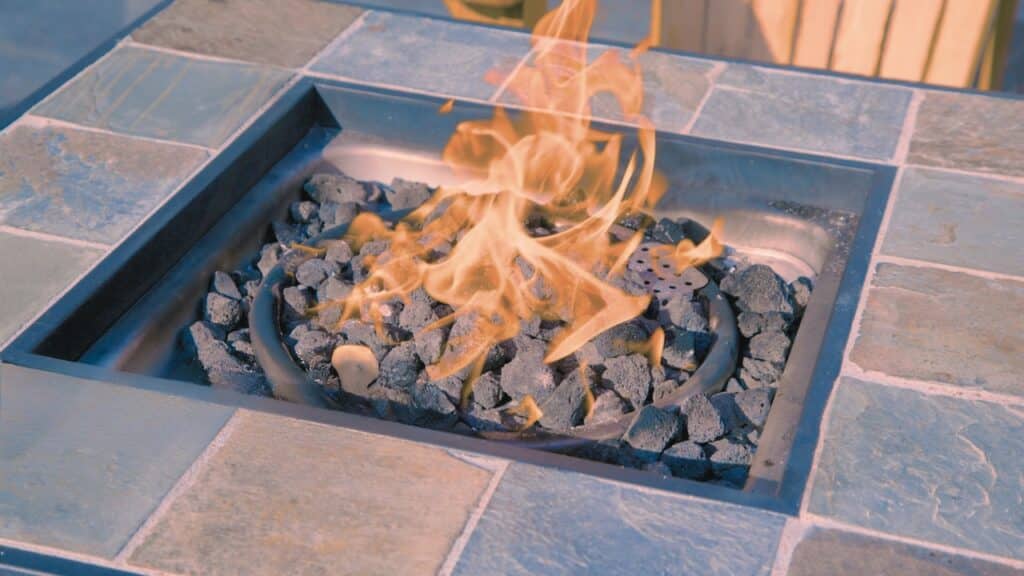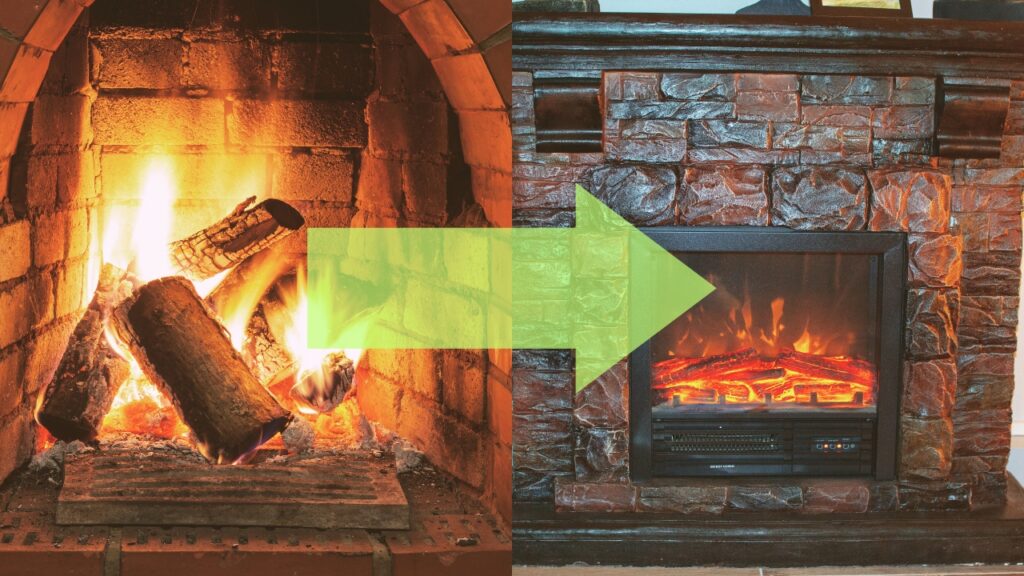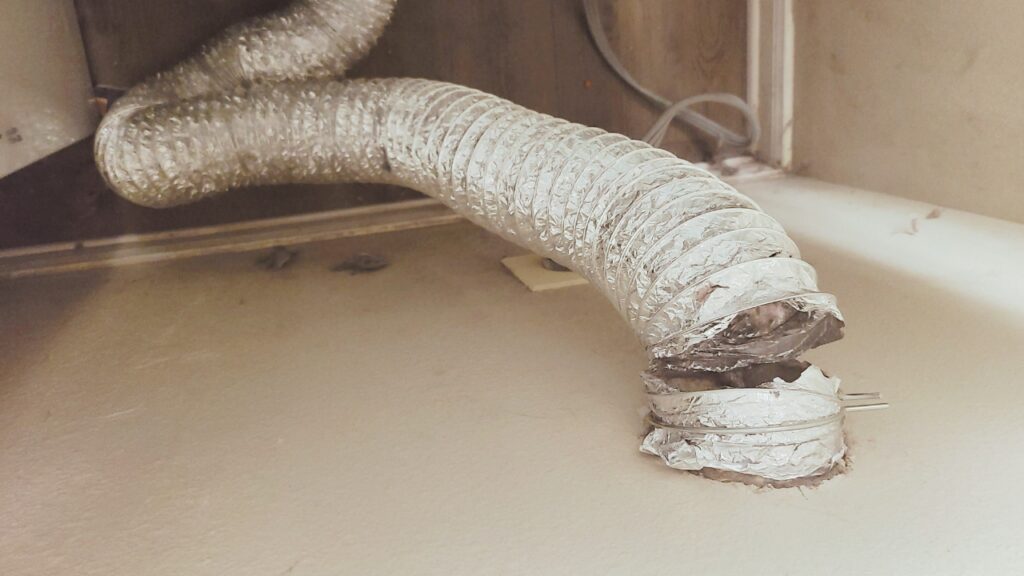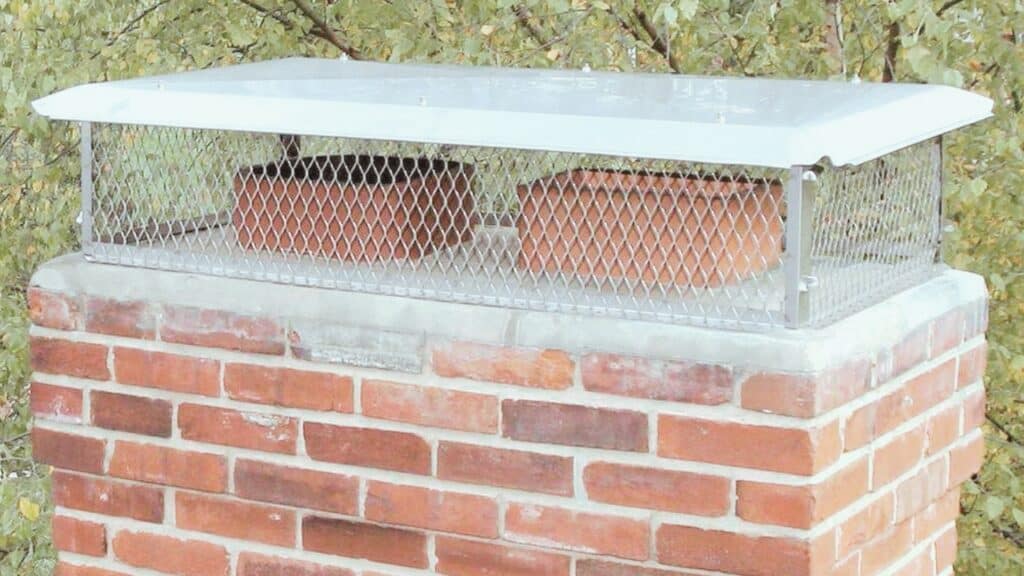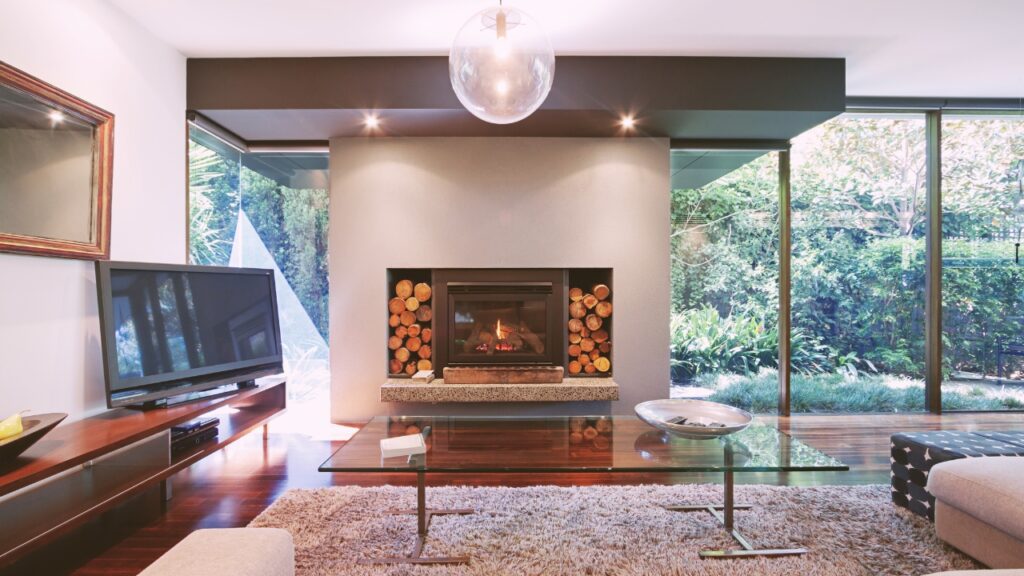There’s something about a fireplace that instantly makes a space feel more inviting. Maybe it’s the crackling sound of the flames or the light dancing off the bricks.
Whatever the reason, fireplaces have a way of adding charm and coziness to a room. And although they’re typically associated with living rooms, there’s no reason why you can’t enjoy them in other parts of the house, including the basement.
Adding a fireplace to your basement can give it an entirely new feel. A fireplace can be the perfect finishing touch to create a cozy lounge or rustic-chic entertaining space.
In this post, we’ll cover the basics and everything there is to talk about a fireplace in basement.
Can You Install a Fireplace in Your Basement?
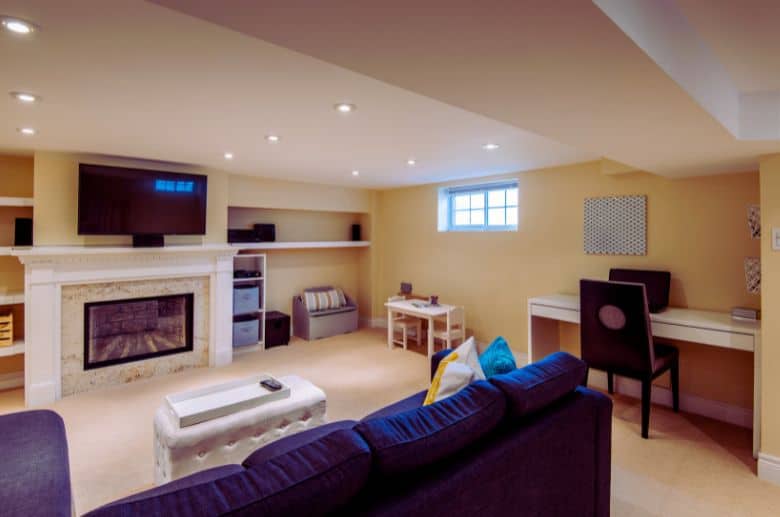
Yes, you can install a fireplace in your basement. However, while installing a fireplace in your basement may seem like a good idea, there are several things you need to take into account before doing so.
First, you need to check with your local building code office to see if there are any restrictions or requirements for installing a fireplace in your area. Second, you need to have your chimney inspected by a professional to ensure it is safe.
Third, you also need to ensure that the ventilation in your basement is adequate to prevent fumes from buildup.
Additionally, you need to install a carbon monoxide detector in your basement to alert you if there are high levels of carbon monoxide present. Considering all these things, installing a fireplace in your basement can be a great way to add extra warmth and ambiance to your home.
——
Do You Need to Hire Chimney & Fireplace Expert?
Get free quotes from qualified experts near you. No commitment required!
——
Pros and Cons of Having a Fireplace in the Basement
Having a fireplace in your basement has pros and cons. Let’s check them out below.
Pros
Here are some of the advantages of having a fireplace in the basement.
They Offer Warmth
One of the most important benefits these fireplaces offer is warmth. When it gets cold outside, you can simply light a fire in your basement and enjoy the warm embrace of the flames. This can be extremely beneficial if you don’t have central heating in your home or if your central heating isn’t working properly.
Aesthetically Pleasing
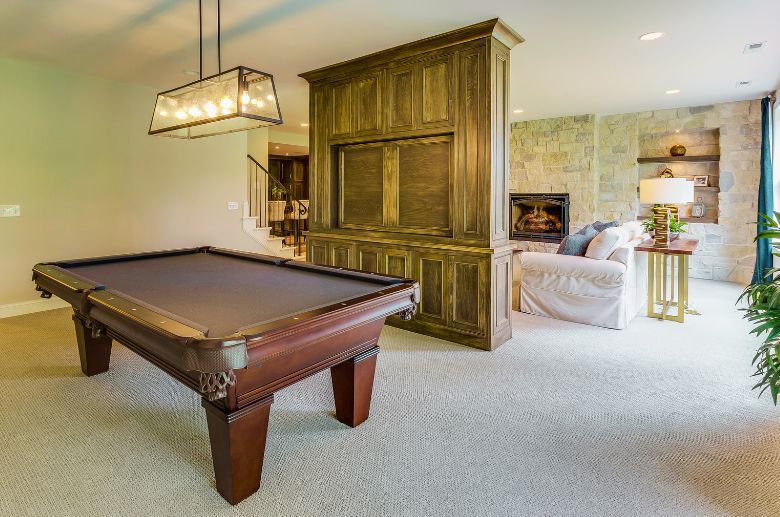
In addition to being functional, these fireplaces are also aesthetically pleasing. If you have a beautiful fireplace in your basement, it can make the space feel more inviting and comfortable. Additionally, it can add value to your home if you ever decide to sell it.
They Can Help Save Money on Heating Costs
Another great benefit of having a fireplace in your basement is that it can help save you money on your heating costs.
If you use your fireplace regularly, you may be able to lower your monthly heating bill. Additionally, you may be eligible for a tax credit if you have a gas or propane fireplace.
Increases the Resale Value of Your Home
If you ever decide to sell your home, having a fireplace in your basement can increase the property’s resale value.
Potential buyers will pay more for a home with a functional and attractive fireplace.
Cons
Here are some of the cons of having a fireplace in your basement:
Hindrance in Air Movement
One of the most common problems is that these fireplaces can hinder air movement in your basement. This can lead to musty smells and a build-up of dust and other allergens.
They Require Maintenance
Another potential problem with having a fireplace in your basement is that they require regular maintenance.
Cleaning the fireplace regularly is important to prevent soot from building up. Additionally, you may need to have the chimney cleaned periodically to remove any blockages.
They Can Be Dangerous
Another thing to remember is that fireplaces can be dangerous, and if not properly maintained, they can pose a severe fire hazard.
Additionally, if you have young children in your home, you must take precautions to prevent them from playing with the fireplace.
Difficult to Install
If you plan to install a fireplace in your basement, you should know that it can be difficult and time-consuming.
You will need to hire a professional to help you with the installation. Additionally, you may need to obtain a local government permit before beginning the installation process.
Types of Fireplaces That You Can Install in Your Basement
There are various types of fireplaces that you can consider installing in your basement. Below, we discuss every one of them.
Gas
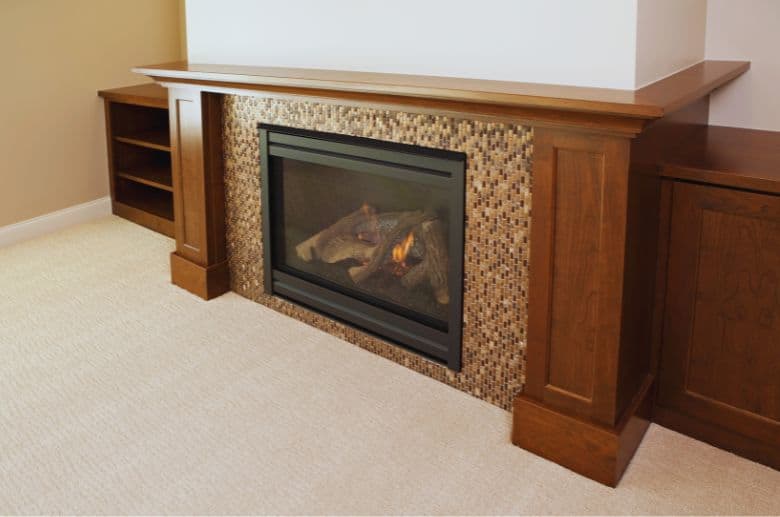
If you want to add a gas fireplace in the basement, know that the most common models are ventless electric and direct vent gas. Having a gas fireplace in your basement can create a more inviting atmosphere, as the fire looks real even if the logs aren’t.
The direct vent gas fireplace in basement requires a chimney to work properly. This can be an existing chimney, such as the one you used for a wood fireplace, or a new one can be built.
A ventless gas fireplace in basement does not need a chimney, pipe, or other vents. They also have several safety features to keep you and your family safe.
Advantages
- Easy to use – You only need to push a button, and the fire turns on.
- Easy to install – Installing a gas fireplace in the basement is relatively easy compared to other fireplaces.
- Safe – Gas is not explosive like wood, so there’s no risk of a chimney fire.
- Clean – Gas burns cleanly and doesn’t produce soot or creosote like wood.
- Efficient – These fireplaces can heat a room quickly and evenly.
Disadvantages
- They require professional installation – You can’t just build a gas fireplace yourself. A certified technician must install it.
- Expensive than electric fireplaces – A gas fireplace will cost more to install and operate than an electric one.
- Produces carbon monoxide – All gas appliances, including fireplaces, produce carbon monoxide. This deadly gas can build up in your home without proper ventilation. Be sure to have a carbon monoxide detector in your basement if you install a gas fireplace.
Wood
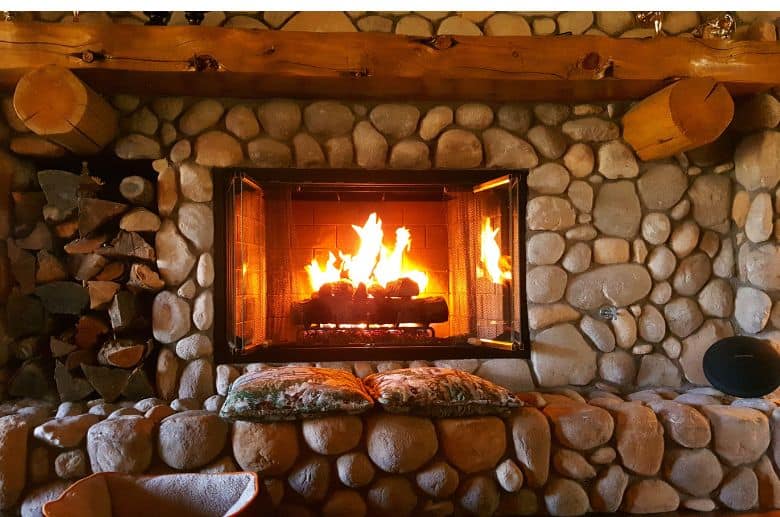
A wood-burning fireplace in the basement is one of the most popular types to install.
Basement wood fireplaces come in two main varieties:
- Masonry
- Prefabricated
Masonry fireplaces are built on site from bricks, stones, or concrete. They’re more expensive than prefabricated models but offer a more custom look.
Prefabricated or factory-built fireplaces are less expensive and easier to install. However, they’re not as durable as masonry models and may not last as long.
A wood stove fireplace in the basement is another popular option. These fireplaces are also known as pellet stoves. They burn wood pellets, which are made from compressed sawdust.
Wood stove fireplaces are more efficient than traditional wood fireplaces and can heat a larger area.
Advantages
- The prefabricated ones are very easy to install – You can usually do it yourself if you have some basic carpentry skills.
- Less expensive than gas or electric fireplaces.
- You can find models certified by the EPA for their efficiency.
- Wood-burning fireplaces create a more natural look and feel than gas or electric models.
Disadvantages
- They’re not as clean as gas or electric fireplaces. Wood-burning fireplaces produce soot and creosote, which can build up in your chimney and cause fires.
- Inefficient compared to gas or electric fireplaces. Only 10-20% of the heat a wood-burning fireplace produces goes into the room, and the rest goes up the chimney.
- Wood-burning fireplaces can produce sparks that can start a fire. They also produce carbon monoxide, which is a deadly gas.
- You need a supply of wood to keep the fireplace going.
Electric
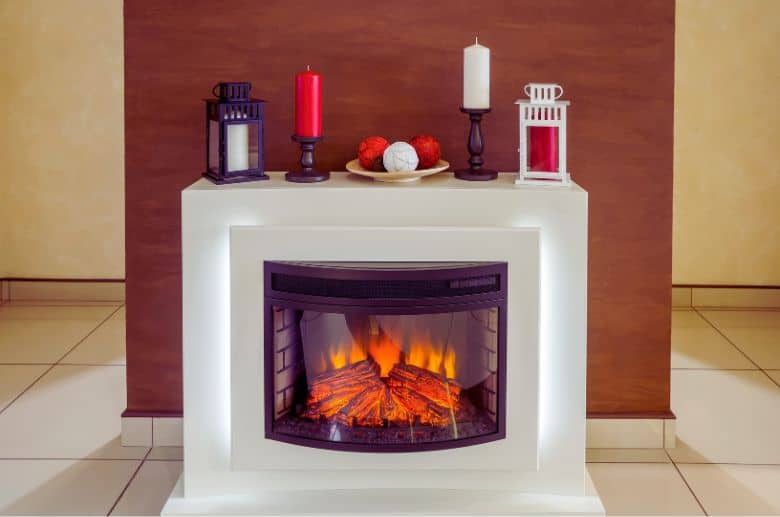
Electric fireplaces are becoming more and more popular. That is because an electric fireplace in the basement is easy to install and doesn’t produce any fumes.
There are two main types of electric fireplaces:
- Inserts
- Wall-mounted
Electric fireplace inserts are designed to fit into an existing fireplace, and they look like real fires with logs and flames but are completely electric.
Wall-mounted electric fireplaces are mounted on the wall like a picture. They come in various styles that you can hang above a mantle or any other flat surface.
Advantages
- Easy to install – You can usually do it in just a few hours.
- They’re less expensive than gas fireplaces.
- You don’t have to worry about fumes or carbon monoxide.
- They’re very safe – There’s no fire or carbon monoxide poisoning risk.
Disadvantages
- They’re not as realistic as gas fireplaces. Electric fireplaces don’t produce any flames or smoke.
- You need a power outlet nearby to plug in the fireplace.
- You may need to install new wiring if you don’t have an outlet nearby.
Ethanol
Instead of using gel fuel, ethanol fireplaces use clean-burning liquid bioethanol.
The average ethanol fireplace has an easy-to-fill burner that can be reused many times. Most fuel tanks for these types of fireplaces hold two liters.
The burner not only enables you to adjust the fireplace’s temperature with ease but also allows you to turn it off and on as needed.
Advantages
- Easy to install – You can do it yourself in just a few hours.
- Versatile – You can use ethanol fireplaces both indoors and outdoors.
- Clean burning – Ethanol fireplaces produce very little soot or smoke.
- These fireplaces are very lightweight and easy to move.
Disadvantages
- Ethanol fireplaces are more expensive than gel fuel and electric fireplaces.
- They are not as efficient as gas or wood-burning fireplaces. Only about 10-20% of the heat an ethanol fireplace produces goes into the room.
——
Do You Need to Hire Chimney & Fireplace Expert?
Get free quotes from qualified experts near you. No commitment required!
——
Does Installing a Fireplace in Your Basement Add Value to Your Home?
A study by the National Association of Realtors found that nearly 46% of home buyers prefer a house with a fireplace, regardless of its location.
The study found that, in some locations, buyers are willing to pay up to $1,400 extra for a fireplace. In other areas, prices ballooned to over $12,000. It is important to remember that fireplaces in rooms with a lot of use are worth more than those without.
A fireplace in your living room is worth more than one in your basement, but you can get around this by making the basement a guest or entertainment room–this usually ups the value. If you want to put a fireplace in your basement, you need to consider how much it will cost.
You might need to remodel your basement, which could be more expensive than the value of the fireplace.
How Much Does It Cost to Put a Fireplace in a Basement?
The cost of putting a fireplace in a basement varies depending on your fireplace type. The table below shows the costs associated with each type of fireplace.
| Type of Fireplace | Installation Cost |
| Electric | $199 – $2,500 |
| Wood | $700 – $6,500 |
| Gas | $2,500 -$10,000 |
| Wood Stove | $3,000 – $4,000 |
Some factors that influence the installation cost of a fireplace include the size, material, and ventilation system you decide to use in your basement. A proper ventilation system costs between $10 and $20 per foot.
Is It Worth Installing a Fireplace in Your Basement?
Whether it’s worth installing a fireplace in your basement depends on factors such as the climate in your area, the size and layout of your basement, and your personal preferences.
Adding a fireplace to a basement can be a great way to keep your home warm and cozy if you live in an area with cold winters.
Not only will it provide heat, but it will also create a relaxing and inviting atmosphere. However, as we’ve mentioned earlier in this post, you should keep a few things in mind before deciding to install a fireplace in your basement.
First, you need to make sure that your basement is properly insulated. If it’s not, the heat from the fireplace will escape, and you won’t reap any benefits. Second, you need to have enough space in your basement for the fireplace.
It needs to be properly ventilated, so it might not be a good fit if your basement is on the smaller side. Finally, you must decide if you want an electric, gas, or wood-burning fireplace. Both have pros and cons, so it’s important to research and determine which is right for you.
Final Thoughts
If you’re considering adding a fireplace to your basement, you must consider many things before taking the leap. Hopefully, this article has helped provide some clarity on what those considerations are and how to go about making your decision.
Contact us today if you have any questions or want help planning your basement renovation. And be sure to browse our other articles for more information and tips on all things related to home improvement.

